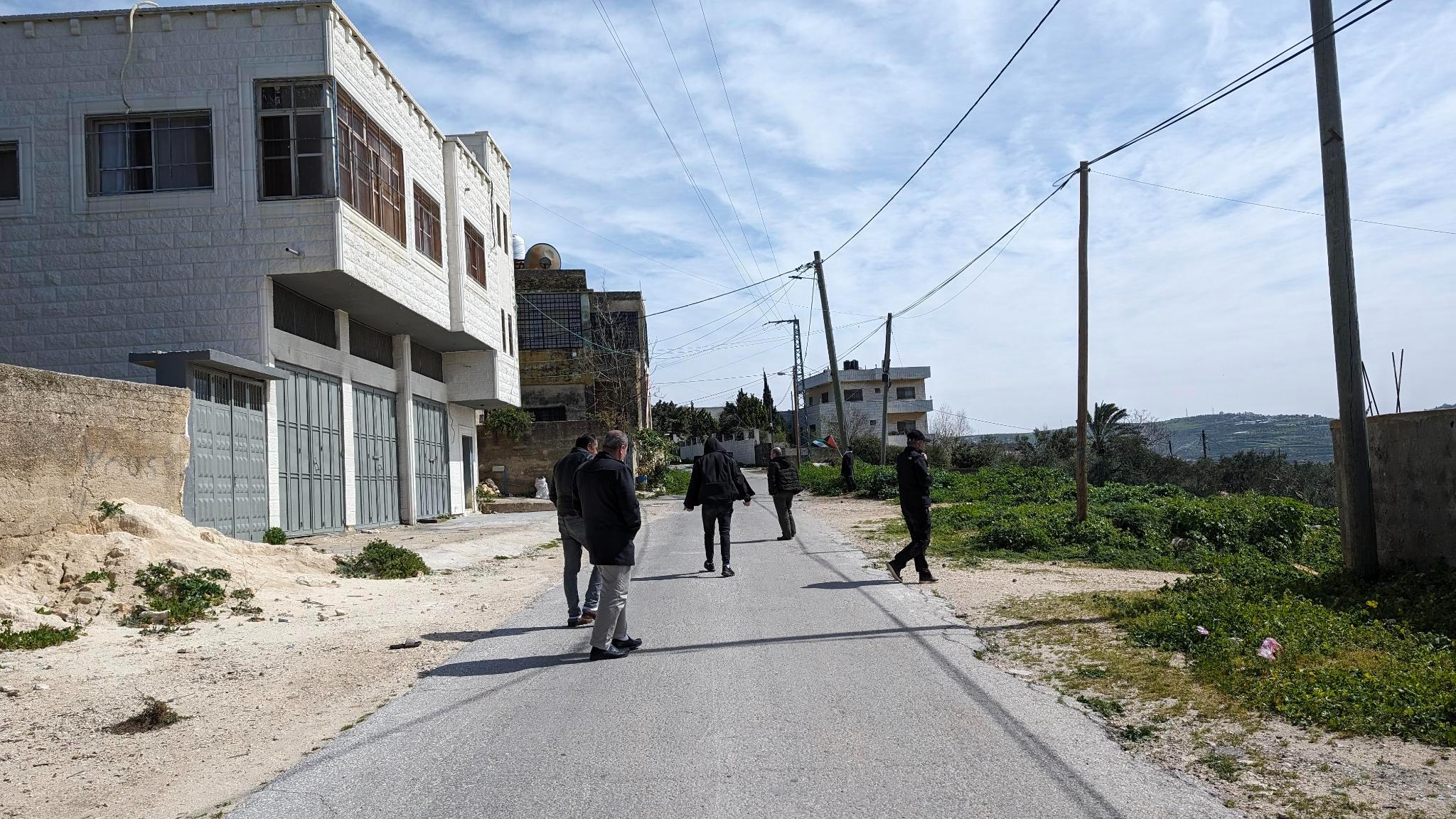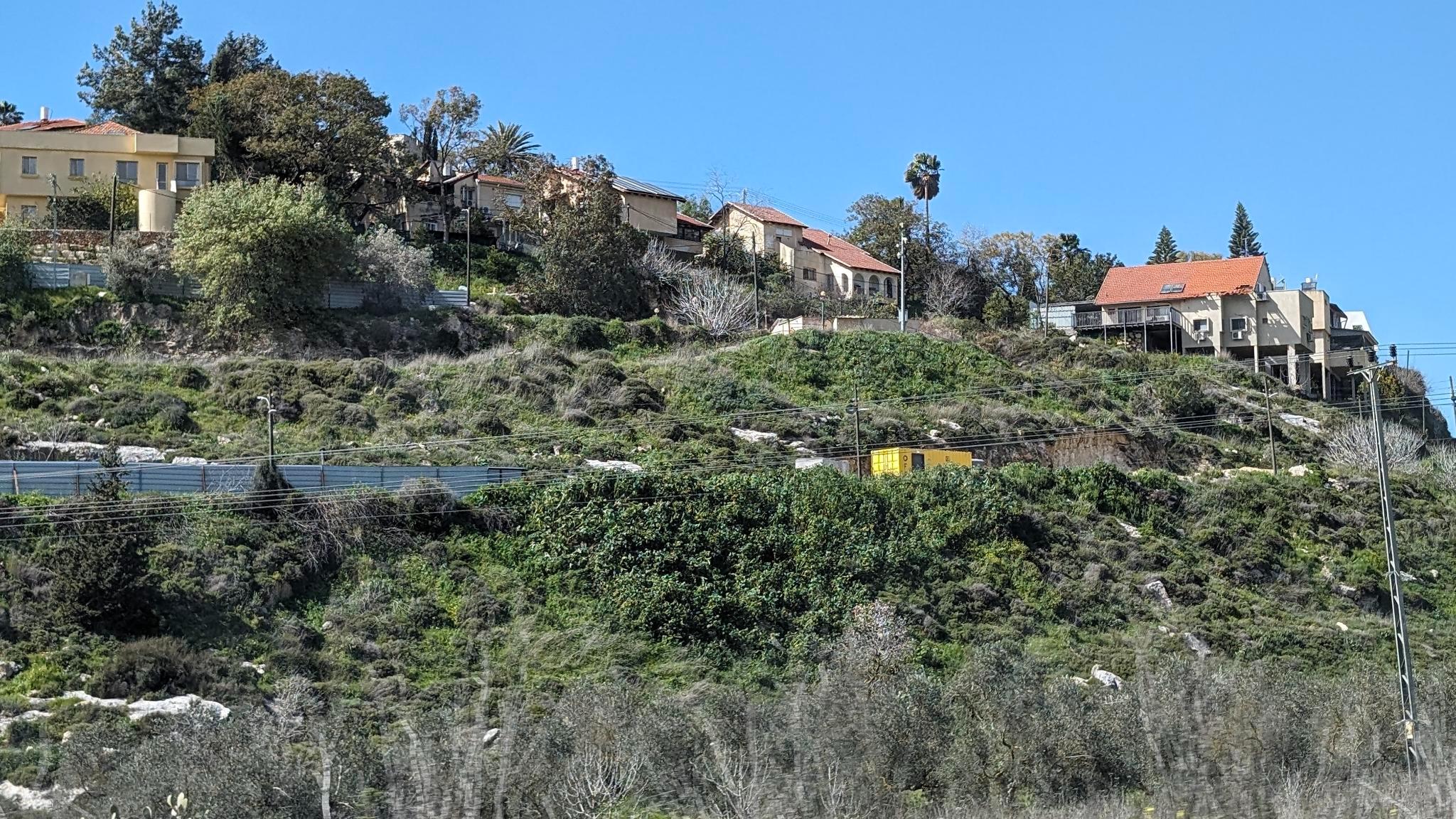1 March 2024 | International Solidarity Movement | Kafr Qaduum

It is Friday, and the call to prayer is heard in the rural village of Kafr Qaduum, West of Nablus in the northern part of the West Bank. The streets are quiet, empty except some children playing and a few cars heading early to the masjid. Around 11am, some men and boys gather and drink coffee off the main road next door. Younger children play and laugh. The scene appears calm if expectant, with an underlying tension. Like every Friday, after prayer, villagers march in protest of the closure of their village’s main road and against the Israeli Occupation.
Protests are a regular part of life in rural villages across Palestine–some as far back as the second intifada. But in most parts of the West Bank unarmed protest marches left off after October 7th, when soldiers and settlers took advantage of Hamas’ attacks to unleash a wave of violence, terrorism, land and resource theft against their Palestinian neighbors. While before, the military used principally tear gas, sound bombs, and rubber coated steel bullets to disperse protestors, since the 7th villagers of Kafr Qaduum report encountering exclusively live gunfire.
Israeli drone flying over the protestors. @ISM
But protests in Kafr Qaduum never stopped. Abu Masseib, former mayor of the village, proudly states they have marched for the opening of their main road every Friday for 13 years–ever since the Israeli courts refused to uphold their rights. He reports that while military aggression has made protesting more dangerous, the villagers have persisted, adapting their practices to minimize harm. Fewer villagers go out each week, they move cautiously and report back and withdraw quickly if military movements are observed. In spite of these precautions, Masseib reports that the military have caused serious injuries. Since 2011, he states that over 100 villagers have been shot with live ammunition. Over 150 were arrested, he says, for weeks to as long as a year. While none have died, 2 children suffered horrifying brain injuries from “less lethal” rounds to the head. Just last week a youth was shot in the face, but survived when the bullet rebounded into his jaw. Many more villagers have lost eyes or suffered serious injuries to legs or stomach. In a group of 14 Palestinian youths and adults sitting with us, he says “10 of us have been shot with live [ammunition]”.
When asked why he thinks the people of Kafr Qaduum continue to protest when other villages have paused marches, he says, “We had this issue before Oct 7th; we want a free road. We have suffered too much; we understand the Occupation.” Over 50% of the village is in Area C–parts of the West Bank annexed by Israel, made available for Israeli settlement and off limits to Palestinians. This includes most of the villagers’ olive trees, their primary agricultural production and of immense symbolic value. “It hurts all the people of the village,” Abu Maseib says.
Today the military presence is mostly hidden. A low flying drone watches overhead, and four soldiers’ helmets and hair peek out over the closest hill. The protest moves conservatively, quietly, without shouted slogans or flung stones. Still the Palestine Red Crescent ambulance and media are ready to respond and document military aggression. The protest ends abruptly when report comes of military movements, and we — the only internationals present–are shuttled safely out of town before anything escalates.

It is hard to guess whether solidarity activist presence acts as a deterrent these days. Indeed, organizer Murad Shtaiwi reports there haven’t been other solidarity activists present since October 7th. Villagers worry about exposing outsiders to the level of violence they themselves experience on a weekly and sometimes daily basis. Murad reports that much of the violence occurs during the week, when soldiers enter the village to damage property, arrest protestors identified in drone photos, or just fire guns indiscriminately. He shares a phone video that clearly shows soldiers firing their weapons at head height and up into residential buildings. These are not shots intended only to frighten or disperse, but to injure and kill.
Before solidarity activists are driven away, everyone walks together back to the relative safety of home. Murad affirms that this is good timing. “It is an honor,” he says, “for us to have martyrs; but it is a greater honor to have living children”.
